Warning! Junk foods can harm a teen’s brain
Though hard to resist, these foods pose risks to learning and mental health
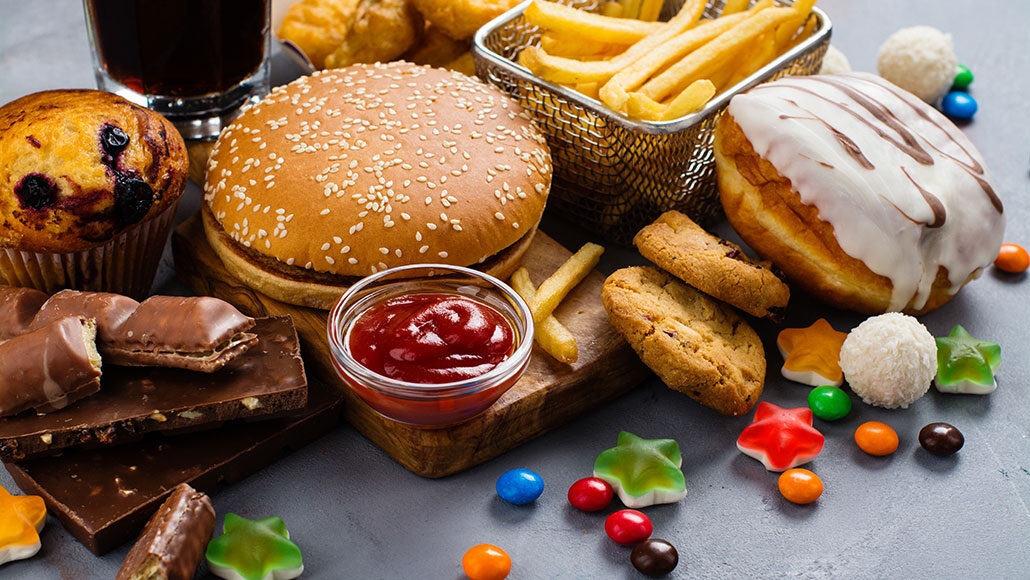
Adolescent brains have a hard time resisting junk food. Researchers now are showing that high-fat and high-sugar diets — such as burgers, fries and sweets — can lead to disturbing changes in mental health.
happy_lark/iStock/Getty Images Plus
“You are what you eat.” When people say that, they mean a healthy diet can boost your health. But the opposite is also true. In fact, if you’re between the ages of 10 and 19, eating too much junk food can harm your body and your brain.
Junk food shapes adolescent brains in ways that impair their ability to think, learn and remember. It can also make it harder to control impulsive behaviors, says Amy Reichelt. It may even up a teen’s risk of depression and anxiety, she notes.
Reichelt is a brain and nutrition specialist at Canada’s Western University in London, Ontario. Adolescents are more sensitive than any other age group to foods with a lot of processed fat and sugar, she says. She is part of a group of scientists around the world who have been studying why.
She and two other researchers at Western recently reviewed more than 100 studies (including their own) about how poor food choices can impact adolescent brains. They described what they learned in the May issue of The Lancet Child and Adolescent Health.
One problem: Adolescent brains are not yet fully formed. And that actually leads to three problems in one, says Reichelt. First, adolescent brains are still developing the ability to assess risks and control actions. Second, teen brains get more pleasure than adult brains do from rewarding behaviors such as eating junk food. Third, adolescent brains can be more easily influenced by their environment. This can include any stress you’re feeling, any isolation or any drugs you may be taking. It can also be influenced by diet. Together, these all can combine to make junk food both hard to resist and extra bad for teen health.
Brains under construction
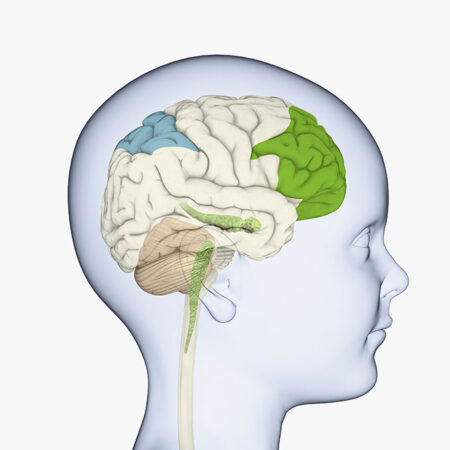
Let’s break that down, starting with preteen and teen behaviors. The brain region that tells us we shouldn’t eat chips all the time — and helps us resist that urge — is the last to mature. Called the prefrontal cortex, this region doesn’t fully develop until we are in our early 20s.
Brain imaging studies show that the prefrontal cortex turns on when we weigh risks and make decisions about how to act.
“Most of our complex brain functions happen in the prefrontal cortex,” says Reichelt. This includes complex math and reading. But she notes that it also includes “how to assess risky behavior.”
At the same time, teen brains get more buzz from rewards. Unlike the prefrontal cortex, the parts of the brain that make us feel good when we do something pleasurable — like eating tasty foods or being with friends — are fully developed by the teen years.
In fact, these regions are even more sensitive when we are young. That’s because of a natural chemical called dopamine (DOH-puh-meen). Dopamine is sometimes called the “feel good” chemical. It lifts our mood when we experience something rewarding. And it is especially active in adolescent brains.
As a neurotransmitter, it zips across the spaces between brain cells. Once it arrives at a new cell, dopamine binds to docking stations there. These molecules are known as receptors. When dopamine docks, those receptors relay the “feel good” signal from the last cell to this new one. That tells the brain that whatever it just experienced is worth getting more of. Adolescents have more dopamine receptors in the brain than do adults. So they get more good vibes from anything they find enjoyable.
The teen brain, thus, has two strikes against it when it comes to resisting junk food. “It has a heightened drive for rewards and reduced self-regulation,” says Reichelt.
That’s a big problem for adolescents because of the third issue: Growing brains can be more easily changed by eating high-fat, high-sugar foods. That’s what Reichelt and her team discovered in their studies of “teenage” mice.
Mouse brains on fat and sugar
Since mouse brains develop very much like our own, they can be used to understand how what we eat affects the human brain. In 2017, Reichelt was part of a team that fed adolescent mice high-fat foods to see how it affected their brains.
One group of mice ate a diet in which 63 percent of their calories came from fat. (That’s a lot of fat. It would be like eating bacon cheeseburgers and ice cream every day.) A second group ate a healthy diet.
As expected, mice eating high-fat food gained weight and put on body fat. But that was not all. These mice also performed worse on memory tests than did mice eating a normal diet.
The researchers tested the mice for what’s known as working memory. It’s the type that allows us to hold onto information long enough to use it. For example, working memory helps you remember which five things you need to buy at the store. Or what time you said you’d meet your friends. It’s also important for reasoning and decision-making. And it involves the prefrontal cortex — that’s the same brain area that helps make decisions.
Reichelt and her team used two different tests to gauge this working memory. In the first, they put the animals in a Y-shaped maze. Each mouse started in the center of the Y shape. From there they were free to explore two of the three arms of the maze. The third arm was blocked off.

Then the researchers opened up the maze’s third arm. Mice will naturally explore their environment and are drawn to new things. Given the chance, they should prefer to visit a new arm of the maze rather than one they’ve already explored. Or they would if they could remember which arms of the maze they had already visited.
Mice eating a healthy diet behaved as expected. They chose to explore the new arm of the maze. But those eating a high-fat diet did not prefer any one arm. The fact they explored all three at random seemed to show they could not remember which parts of the maze they had seen already.
The second test used a maze set up in a tank of murky water. The end of the maze is a platform just under the water’s surface. To get out of the water, a mouse must navigate to the platform by remembering landmarks. (The mice are scooped up to avoid drowning if they can’t find their way.)
Mice fed a healthy diet performed much better than did those eating high-fat chow. The fatter mice were just as good at swimming; they just did not find their way to the platform. This suggests they could not remember the landmarks.
Then the researchers looked at the animals’ brains. Here they found important differences in reelin, a chemical that helps brain cells chat with each other. Mice on high-fat chow had roughly 35 percent less reelin in their prefrontal cortex compared to mice on a healthy diet. The high-fat diet may have made the prefrontal cortex in these mice work less effectively.
People with brain diseases (such as schizophrenia and bipolar disorder) often have lower levels of reelin, too, says Reichelt. “We can’t blame that on junk food in adolescence,” she says. “But it may be a contributing factor [to risk of disease].”
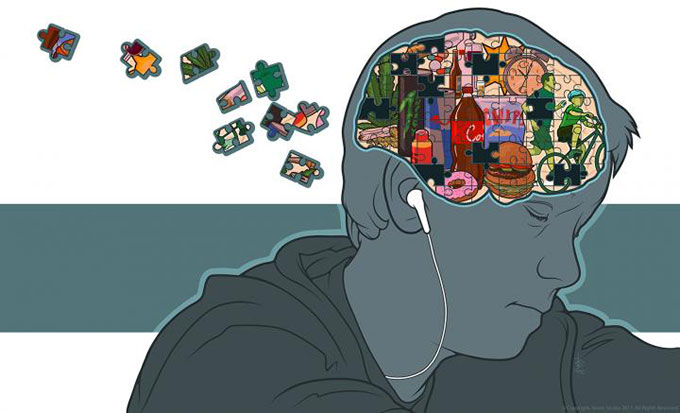
Reichelt found similar behavioral effects in adolescent rats that got daily access to a sugary drink. They showed less desire to explore new things than did rats not fed sugar.
Each rat had been placed in an enclosed square area with different objects in each corner. The rats could explore all four objects. The researchers then removed the rats from the pen for five minutes and swapped the locations of two objects. Then each rat returned to the enclosure. Animals not fed sugar spent more time exploring objects that were now in a new place. This suggests they could tell the objects had been moved. But the sugar-fed rats spent just as much time with the unmoved objects as they did with the changed ones. It seems they couldn’t tell what had been moved.
Human brains on junk food
Other researchers have found links between brain health and what teenage kids eat. Felice Jacka is one of them. She is an expert in nutrition and psychiatry at Deakin University in Victoria, Australia.

In one 2013 study, she and her team recruited more than 2,000 11- to 14-year-olds living in London, England. Each answered questions about what they ate and how they felt, mentally. The kids were asked how many servings of fruits and vegetables they ate each day. They also were asked how often they ate chips, candy, cookies, fried foods and sugary soft drinks. Then they were sorted into five groups, depending on how healthy their diets were.
Next, the adolescents answered 13 questions designed to figure out if they suffered from depression. The questions asked about their emotions and behavior over the previous two weeks. They were phrased as statements. The kids described if those statements were true, not true or sometimes true. Questions ranged from “I feel miserable or unhappy” and “I didn’t enjoy anything at all” to “I felt so tired, I just sat around and did nothing.”
The researchers scored each kid’s answers for signs of depression. Adolescents who ate the most junk food were nearly 50 percent more likely to show signs of depression.
Why might eating junk food be linked to depression? The data are unclear. Some research suggests that processed foods, such as lunch meat, increases inflammation in the body and the brain. Inflammation is one of the body’s responses to cellular injury and involves swelling. Other research has linked inflammation with depression. In one study, researchers found that people with depression had 30 percent more brain inflammation than did people who were not depressed.
Good fat, bad fat
The good news is that you can make food choices that support a healthy brain.
“The brain is the most fat-rich organ we have,” notes Alexandra Richardson. She is an expert in how diet affects the brain and a researcher at the University of Oxford in England. “And where does it get its fats? From what we put in our bodies.”
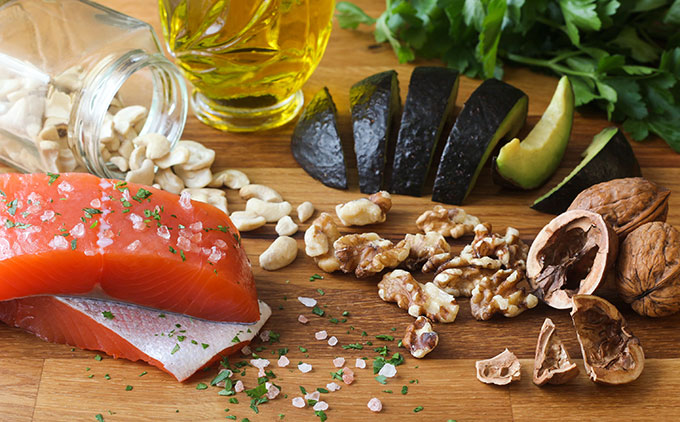
But not all fats are the same. Our brains need a type known as omega-3 fats. These helpful fats are found in fish, flaxseed and some oils. These fats help build the membrane that surrounds brain cells. Brain cells need membranes to hold them together and to communicate well with each other.
In one 2005 study, Richardson and her team showed improved mental health in children who took omega-3 supplements. The 117 children who took part were between the ages of five and 12. All had problems with attention, hyperactivity and impulsivity. They also struggled with reading and spelling.
Over three months, about half the children took omega-3 pills. The others took look-alike pills with no fats. Such inactive “treatments” are known as placebos (Pluh-SEE-bohs). Compared to kids who got the placebo, those who took omega-3 pills showed improved attention and ability to control their hyperactive, impulsive behavior. Their reading and spelling scores also went up. This may have reflected being able to pay closer attention in class.
Junk food may trigger attention-related problems because it does not contain the good fats needed to build healthy brain cells, says Richardson. But downing foods with more good fats can support healthy brains.
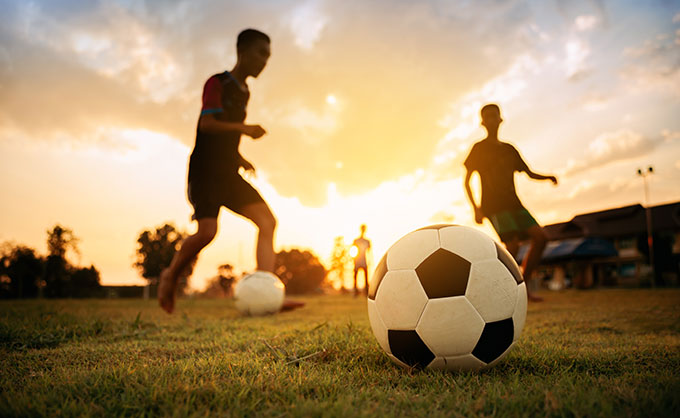
Exercise for your brain
Research shows exercise can be a good way to fend off damage from junk food, notes Cassandra Lowe. She works at Western University, where together with Reichelt she has studied kids’ brain and nutrition.
Two important things happen in the brain when we exercise. The first is that the brain’s reward system — the one that feels good when we do something we like — becomes less sensitive to food cues. While scientists don’t quite know why, the outcome is a good thing. “We don’t find high-calorie foods as rewarding,” explains Lowe.
Exercise also triggers the body to make a protein called BDNF. That stands for brain-derived neurotrophic (Neur-oh-TROH-fik) factor. BDNF helps brain cells grow. It also strengthens links between them.
This means exercise can boost strong connections between the prefrontal cortex and other brain regions. When that happens, the prefrontal cortex “can exert control better,” says Lowe. In other words, better connections help us weigh risks, make informed decisions on how to act, and curb our impulses.
What is the take-home message for kids? Many already know that junk food can make people fat and physically unhealthy, says Richardson. Most don’t often understand that it also can lead to unhealthy brains.
Processed and fried foods, such as cold cuts, store-bought baked goods, candy and chips don’t have many of the nutrients our bodies and brains need, Richardson says. Kids need to understand that they tend to be rich both in calories and in “concoctions of chemicals that do not support human health — physical or mental.”







